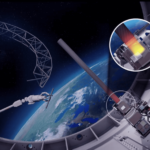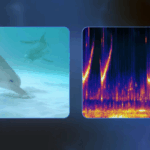Peter Diamandis, co-founder of the XPrize, a series of contests designed to address the biggest challenges humanity faces, sent out an email blast in the last week that talked about the recent addiction to dystopian films and end-of-the-world plots, whether on the big screen or offered by network television and streaming services.
It appears to be a growing malaise in society these last few decades where we increasingly are being fed popular movies where space rocks slam the Earth, monsters from the deep ravage the planet, or superheroes are needed to bail us out of one close scrape after another.
There is a reason I had nightmares when I was a child, every time my parents took my brothers and me to see horror and science fiction movies. They would keep me up for days. I made a point of not going to see them in theatres or watching them on television. They didn’t feel good for my psyche.
To this day, I wonder why we are so fascinated with the creepy and the dark side and prone to watching stories that paint our bleak and dystopian future. Is this a symptom or a leftover artifact from our ancestral past, where we feared the dark and the things that go bump in the night?
So, hearing Peter’s take on this very subject, I found it reassuring. To know that others see the problem these films and shows create for the human mindset made me want to share his message.
I’m tired of Black Mirror, Terminator-like movies, and endless assassin flicks. Hollywood is screwing with our heads and our collective mindset. King Solomon’s wisdom has never been more important: “Without a vision the people will perish” – Proverbs 29:18
Humanity, all of us, need a non-dystopian, positive vision of the future – one we can strive to create – because without a target, we’ll miss it every time.
Our brains (100 billion neurons, 100 trillion synaptic connections) are neural nets, and we train them every day with every program we watch and every story we read. If all we see is a future filled with terrorists, killer robots and runaway destructive AIs, then that is what we’ll create.
If we want a positive future for humanity – for ourselves and our kids – then we need a vision of tomorrow that is hopeful, compelling, and abundant.
When half of Prime Video’s global audience chooses to spend 12 billion minutes wandering a radioactive wasteland, it’s a signal: dystopia isn’t fringe — it is the mainstream.
Here’s the data on how negative and dystopian today’s films and TV shows are:
- Dystopian movie releases doubled from 2010 to 2024, outpacing overall film output (Parrot Analytics).
- In 2024, 6 of the top 20 highest-grossing films were either post-apocalyptic, dystopian, or large-scale disaster stories. That’s nearly a third of what we’re consuming (Box Office Mojo).
- Media negativity is by design: 105,000 headline A/B tests proved negative wording increases clicks across 370 million impressions (Harvard School of Public Health).
With these films, we are programming our collective neural net to a mindset filled with fear and disaster. But here’s the truth: the future we envision is the future we create.
How do we incentivize the creation of hopeful future storylines?
We need visions of the future that inspire us. Not just handwringing about climate collapse, AI overlords, or zombie outbreaks. We need our own modern-day Star Trek: a north star that pulls us toward possibility, and here are four ways we can drive this transformation:
1. Create an XPRIZE for Optimistic Media: Launch a multi-million-dollar competition for filmmakers, writers, and creators who develop compelling, scientifically-grounded visions of an abundant future. Not rose-colored fantasy, but data-driven optimism that acknowledges challenges while showing paths to overcome them.
2. Build a “Media Abundance Index”: What gets measured gets managed. Let’s create a dashboard tracking the ratio of dystopian-to-optimistic content across platforms. Make studios compete for higher scores on the “Abundance Index,” similar to how they now tout diversity metrics.
3. Invest in Exponential Storytelling: Those who want to steer towards a hopeful, compelling, and abundant future for humanity should back productions that showcase how exponential technologies solve humanity’s grand challenges.
4. Leverage AI for Narrative Transformation: Today’s AI systems can analyze story structures and help writers craft compelling narratives around hope, innovation, and human potential. Let’s use these tools to create the next positive world-building generation.
Remember, by 2030, 7.5 billion people will be connected to the internet: that’s 90% of humanity plugged into a global intelligence layer. We are creating a planetary brain capable of unprecedented collaboration and problem-solving.
The future isn’t something that happens to us. It’s something we create—one story at a time. The stakes couldn’t be higher. If we keep programming ourselves with apocalyptic visions, don’t be surprised when reality follows suit. But if we can shift the narrative—if we can make optimism cool again—we unlock possibilities beyond our imagination.
It’s time for our modern Star Trek moment. Let’s create it together.









